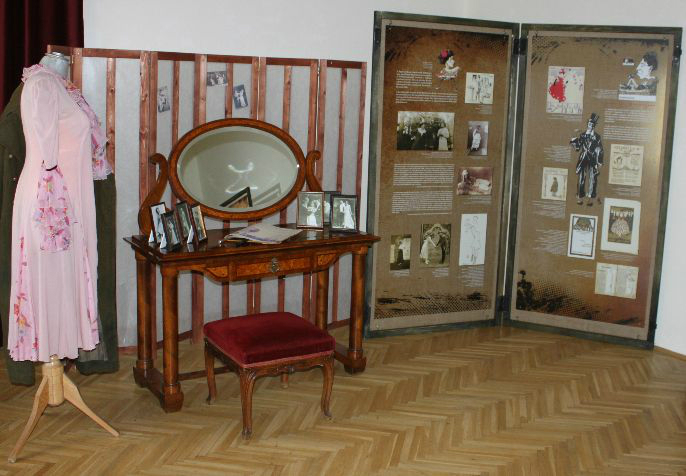Soldier Actors, Prisoner Prima Donnas
EXHIBITION
This exhibition in the Hungarian Theatre Museum and Institute takes us back to the time of the IWW, when shows were staged on the fronts and Hungarian POWs organized their theatre in Siberia.
| Sipőcz Mariann |
2014-11-29 09:30 |
In the First World War during the ever longer military actions, the high commands of the Hungarian army decided to organise front theatres so as to boost the morale among the soldiers. Following in the footsteps of the German army, the Actors National Guild founded the first front theatre in March 1917. A theatre director, János Komjáthy, put together a 15 strong company recruited mostly from theatres in the country-side. The First Hungarian Front Theatre made its debut on 3 April 1917 on the eastern front and later travelled along the front lines in Serbia, Romania and Italy.

Nevertheless, the soldiers themselves also organised performances especially around holidays and, at other times, to support widows and orphans. The prisoners of war established their own theatres where soldiers attempted to enact their civilian life with the help of theatrical performances. Sometimes these were one-off shows while for example in Krasnodar even a theatre building was erected with a proper stage, an auditorium, boxes, a lobby and a ticket office.
Besides dramas in foreign languages, the most successful contemporary musical plays form pre-war Budapest were also on show, especially those whose plots and scripts the prisoners were able to recall. Imre Kálmán’s Tatárjárás ("The Gay Hussars" or "Autumn Manoeuvres in English) was practically staged in all the prisoners’ theatres (Beresovka, Chita, Habarovsk, Krasnojarsk, Nikolsk-Ussurijskij) for full houses. While Csárdáskirálynő (The Riviera Girl or The Gipsy Princess in English) was also popular, Viktor Jacobi’s Leányvásár (The Marriage Market) was an even bigger success. Ferenc Molnár and Ferenc Herceg plays were also common, and prisoners too wrote dramas about their own life in capture.

In these theatres men played the female roles. These male prima donnas enjoyed privileges, received presents, their photos appeared in theatrical magazines, and were frequently photographed by their comrades. This kind of theatres appeared during the war and at the end of it, when the POWs were released, they disappeared.
The exhibition is open in Budapest in Bajor Gizi Színészmúzeum (Bajor Gizi Actors’ Museum until 1 February 2015, and then it reopens in Dunaújváros (February 2015) and in Miskolc (April and May 2015).